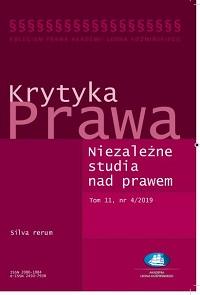Instruments Stimulating Taxpayers to Transfer Their Tax Residence to the Republic of Poland
Beata Kucia-Guściora
John Paul II Catholic University of Lublin
3/2023 15 (1) Krytyka Prawa. Niezależne Studia nad Prawem
DOI 10.7206/kp.2080-1084.578








